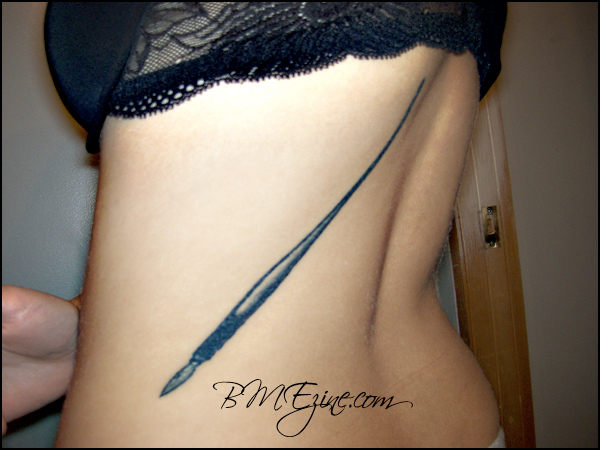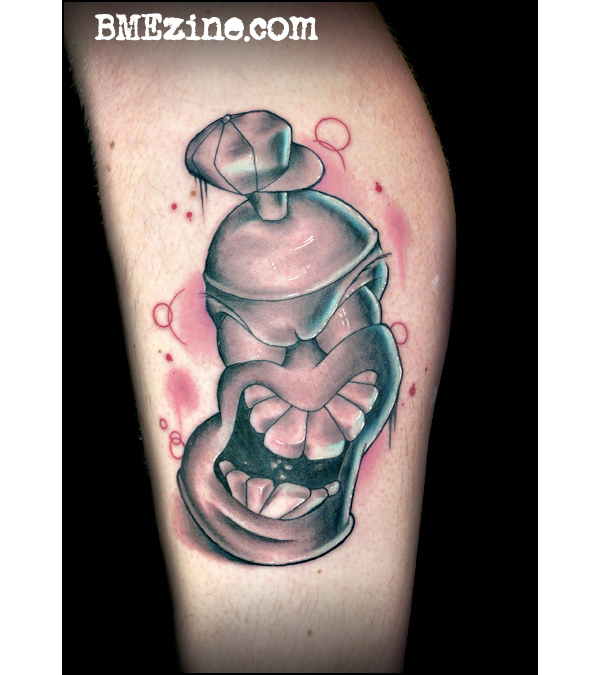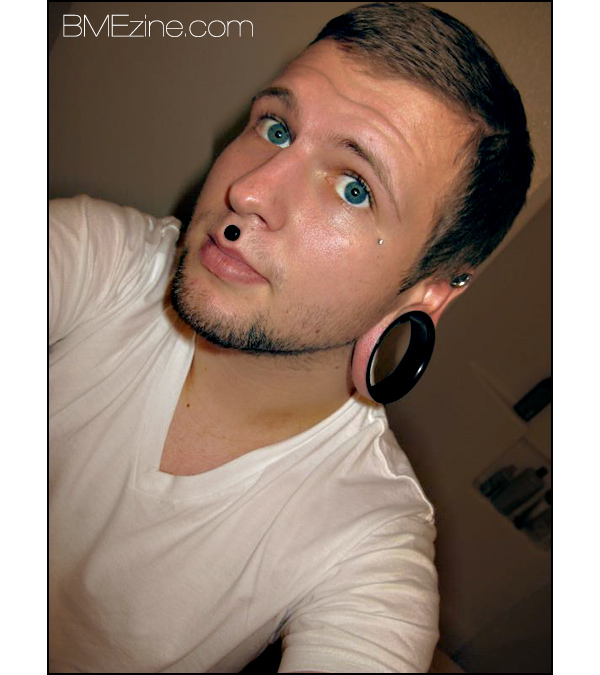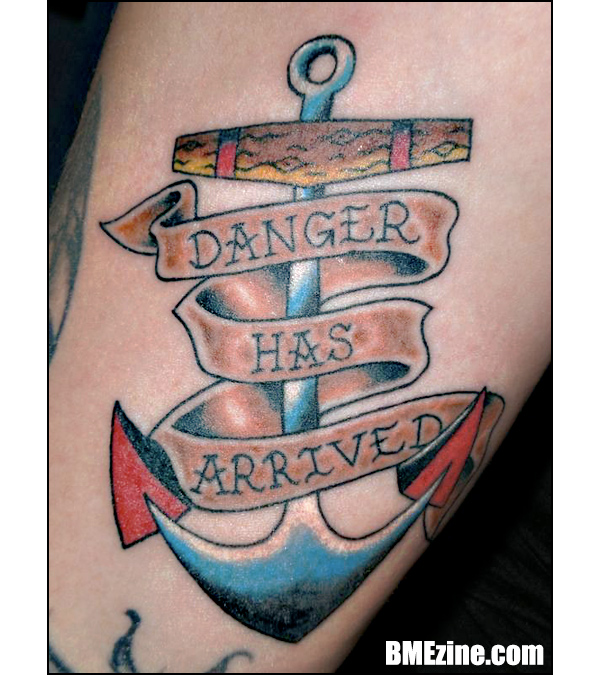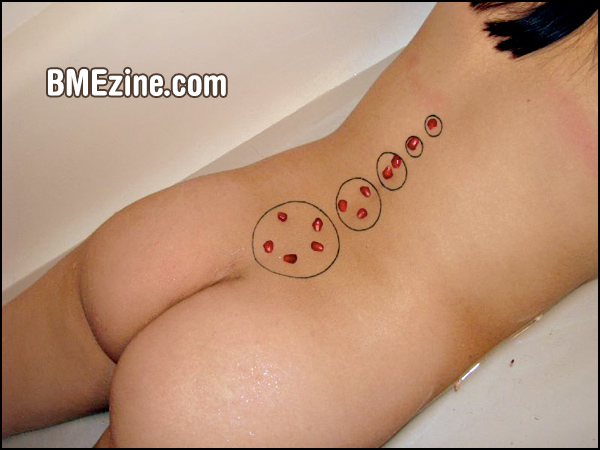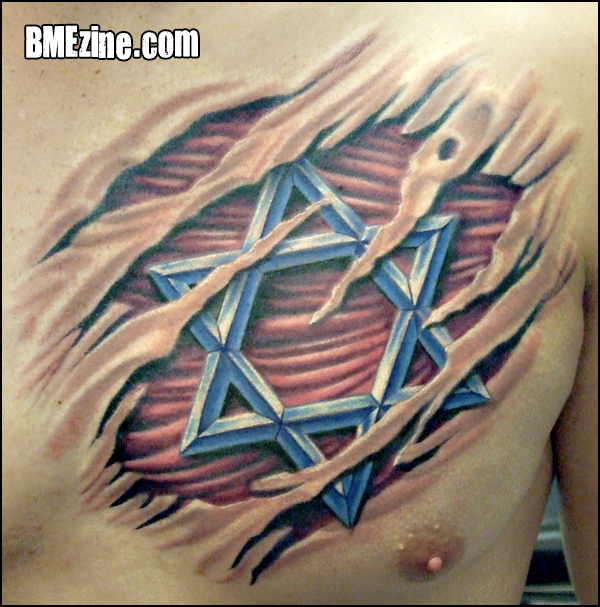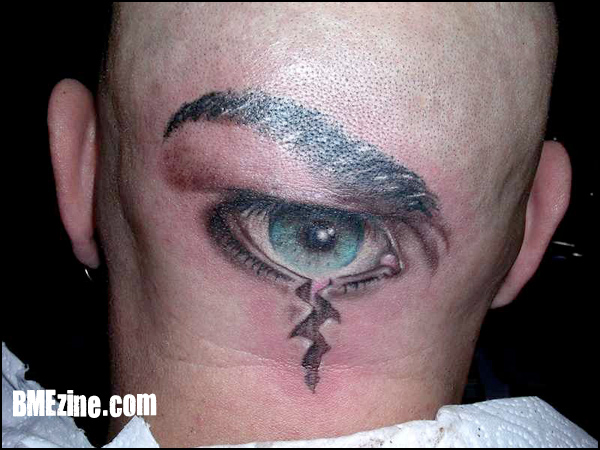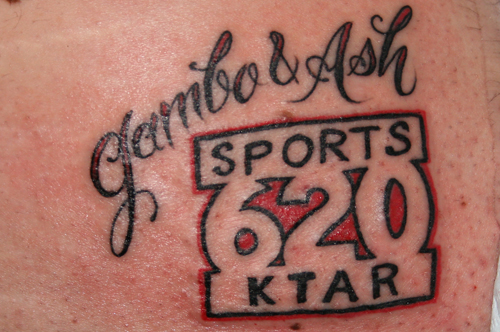
With the Super Bowl just around the corner, it’s the season for poorly conceived bets and all manner of bribery in exchange for tickets! What fun, right? And really, what better way to prove one’s devotion to a football (that is “soccer,” to Europeans, or something) team than getting a tattoo of, wait, a radio station logo? Hey, whatever works. Fredy Gutierrez, a fellow Arizona Cardinals fan, desperately wanted to go to the big game but could not afford the estimated million-dollar ticket price, but luckily, Phoenix-area radio station 620 KTAR was having a sadistic contest in which some poor sap need only tattoo their ass with the station’s call letters to receive two of these golden tickets. Mission accomplished! Photographic evidence above.
Gutierrez is taking his nine-year-old son, Marcus, to Sunday’s game.
“The only thing I can say is that I hope that my son enjoys it,” Gutierrez said about the game.
Marcus said he is looking forward to going to the game, and will likely have memories from the experience that will last a lifetime – just like his father will.
What does Gutierrez’s wife think about the new tattoo?
“She thinks I’m pretty crazy,” Gutierrez said.
Ha ha, crazy indeed. At least he got something out of it, though — consider the curious case of Deadspin editor A.J Daulerio, a Philadelphia Eagles fan who made a bet with former Deadspin editor and Arizona Cardinals fan, Will Leitch, when those two teams played each other in last week’s conference championship. Among the items Daulerio put on the line in the event of an Eagles loss (others included treating Leitch to a sushi dinner and letting the former editor smash him in the face with a cookie sheet, on video) was getting a tattoo of a buzzsaw — a reference to a depressing nickname for the Cardinals — on his ass. He was very excited about the prospect!
Let it be known: I currently have no tattoos on any part of my body, have never had any desire to get one, nor would I even take this bet unless I was 100 percent convinced there would be no possibility of me losing. So there. Shock me, Buzzsaw.
But because God hates a boaster, and patchy facial hair, the Cardinals were indeed triumphant over the Eagles! Daulerio took it rather well:
If anyone knows any tattoo artists who are willing to put a buzzsaw on me, well, let me know. This fucking sucks.
And indeed, last night, the soon-to-be-tattooed design was unveiled:
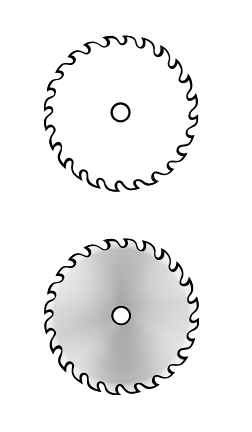
Hey, that’s pretty tasteful! Meanwhile, Daulerio has quietly accepted his fate.
I’m meeting a prospective artist over at DareDevil Tattoo in the Lower East Side in a few minutes to find out just how long, painful, and ridiculous-looking this image would be. Many people have tried to talk me out of following through with my end of the Mayor’s Bet (including the Emeritus himself), but, personally, I feel like not following through with it would be even more lame than actually having a buzzsaw tattoo forever.
Well, Daulerio is nothing if not a man of his word. This afternoon, he did indeed make the journey to Dare Devil Tattoo, and displayed the stoicism one hopes for in a “blogger,” as it were.
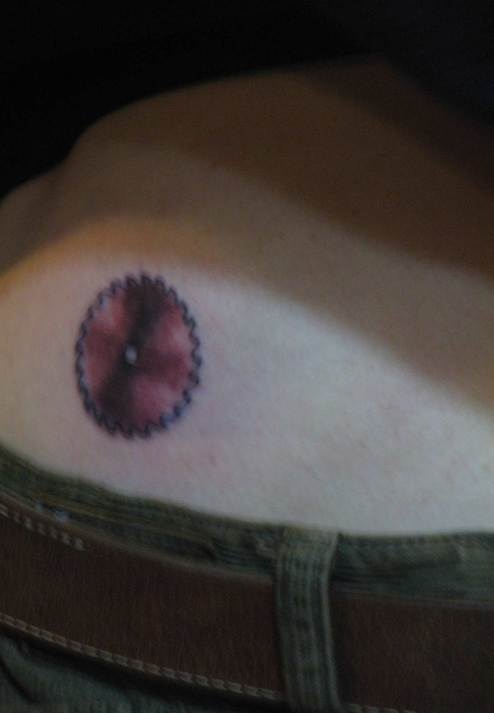
I was under the impression that tattoos, even the most pedestrian ones in the shape of power tools, would take a long period of time. Thankfully, Michelle from Dare Devil Tattoo is well-honed in her craft. It only took about 20 minutes, was relatively painless, and no blood was spilled. But now I’m forever scarred and, also, forever an unintentional lifelong supporter of The Buzzsaw That Is The Arizona Cardinals. Or woodworking.
Hey, it could be worse! You could be getting hit in the face with a cookie she— oh, right. Well, all’s well that ends well, or something. Did Daulerio at least learn a lesson from this sordid tale of intrigue?
I will never, ever bet on the Philadelphia Eagles again.
[…]
Fuck you, Eagles.
That’s the spirit! Go Buzzsaw!
He Did What? [620 KTAR]
Hope. Change. Buzzsaw Tattoos, The Buttsaw That Is The Arizona Cardinals [Deadspin]
